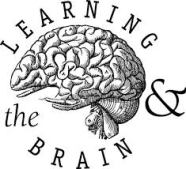Students at College of Southern Nevada are gearing up for final’s week and certain study techniques are worth trying to retain information to pass those tests.
In a 2013 article “Improving Students’ Learning with Effective Learning Techniques: Promising Directions from Cognitive and Educational Psychology,” researcher John Dunlosky et al. found five study skills are most effective for students to employ in order to learn best.
Elaborative interrogation is a strategy in which the student reads new information and questions why a fact is true.
Self-explanation connects the learning to personal experiences of the student. For example if a portion of the book states that corporations are global, a student might think of a store he shops at like Walmart, which is a global corporation.
Practice-testing is testing self on the material, sometimes in timed tests.
Distributed practice is a strategy of using interval studying to spread the workload over many sessions. For example, study for 20 minutes, take 10-minute break and then repeat. It provides a rest for the brain, which can help the student process the information better.
Interleaved practice, which is mixing different kinds of problems together when studying, can help a student learn difficult material. This strategy is recommended for math.
 “I’ve heard of interval studying but never tried it,” says Micah Smit, a CSN student. “I normally re-read the material until I can memorize it and hope it’s good enough when I take my exams. But in the near future I will try this technique to see if it works for me and helps improve my grades.”
“I’ve heard of interval studying but never tried it,” says Micah Smit, a CSN student. “I normally re-read the material until I can memorize it and hope it’s good enough when I take my exams. But in the near future I will try this technique to see if it works for me and helps improve my grades.”
“Usually, I go over the lesson again and make flash cards to make sure I can retain the information,” says Alexa Valdez, a CSN student. She uses the practice-test method.
CSN student Katerina Rojas uses the distributed model. “I don’t like to study in one session,” Rojas says. “I feel as though I don’t retain the information well enough so as soon as I finish up with my session, it doesn’t stay with me for much longer. When I study in segments, it makes it a lot easier and it shows when I take my exams and get the grade I aimed for.”
“The best tip to approach studying in intervals would be to start well-paced,” Rojas says. “By that I mean go at it like how you would try and study, but to make sure you give your brain a rest for about 20 to30 minutes and then study again. Once you do it a few times it’ll all come naturally.”




